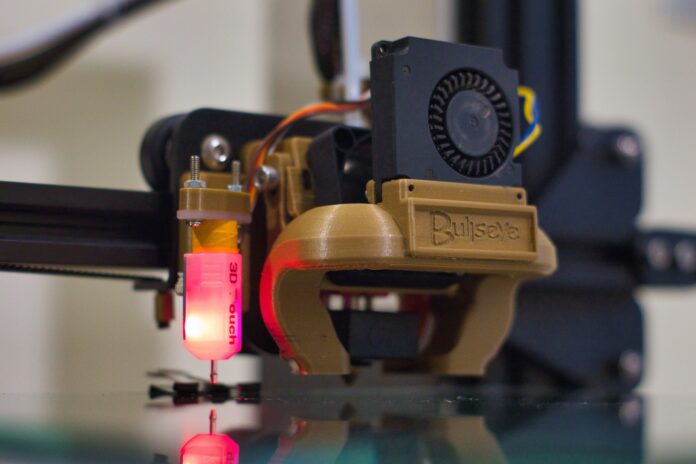In this article, we will explore the potential benefits and challenges of using 3D printing in space.
3D printing technology, also known as additive manufacturing, has been around for decades but has recently seen a wave in popularity. This technology allows for the creation of complex and intricate objects by layering material one layer at a time. 3D printing is already used for a broad range of applications, ranging from creating prosthetic limbs to printing entire houses. But what about taking 3D printing to the next level, literally?
3D Printing in Space: The Future of Manufacturing
It cannot be more obvious that we shout use it to manufacture replacement parts for spacecraft and satellites. Instead of relying on costly and time-consuming resupply missions. Astronauts could simply print the necessary parts on demand. This would not only save time and money but also increase the reliability and efficiency of space operations.
But the potential of 3D printing in space doesn’t stop there. Remember we talked about printing houses, Now imagine that but on mars. Such as a base for future manned missions to Mars. This could greatly reduce the number of materials and equipment that would need to be launched into space. which is not only costly but also logistically challenging.
Space Medicine: The Possibility of Printing Human Tissue
Medical applications also present a huge opportunity for 3D printing in space. Like printing medical supplies and equipment. But something even more crazy scientists could also use 3D printing to create human tissue for research. This could lead to a better understanding of the effects of long-term space travel on the human body. Which is critical for planning future manned missions. It could also lead to the development of new medical treatments and techniques that can be used on Earth.
Exploring the Final Frontier with 3D Printing
Exploration and research are also areas where 3D printing could play a significant role. Imagine being able to print tools for scientific experiments on-demand, rather than having to launch them into space. This would enable scientists to conduct experiments that were once not possible due to the restraints of resupply missions.
Or being able to print structures for housing and protection, like habitat for a manned mission to the moon. This would not only provide a safe and comfortable living environment for the astronauts but also enable the exploration of areas that were previously not accessible.
Overcoming the Challenges of Printing in Space
Of course, 3D printing in space is not without its challenges. One of the main technical challenges is finding materials and equipment that are suitable for use in the harsh environment of space. The conditions in space are extreme, with high levels of radiation, temperature fluctuations, and vacuum. Finding materials that can withstand these conditions is crucial for the successful operation of 3D printers in space.
Additionally, designing for the unique conditions of space can also be a challenge. Engineers need to take into account the specific requirements of space-based 3D printing, such as weight and volume limitations, to ensure that the final product is functional and efficient.
Logistical challenges also present a significant obstacle. Getting the necessary materials and equipment to space is no small feat, and managing and maintaining the equipment once it’s there can be even more difficult. This requires careful planning and coordination, as well as the development of specialized equipment that can withstand the conditions of space.
Economic challenges also come into play. The cost of launching materials and equipment into space is high, and it remains to be seen if the potential return on investment for space-based 3D printing is worth it. The development and launch of 3D printers and the necessary materials and equipment can be costly, and it’s important to consider if the benefits outweigh the costs. Additionally, it’s important to consider the economic implications of using 3D printing in space, such as the potential impact on existing industries and the creation of new markets.
A New Era of Space Exploration and Research
3D printing in space presents several possibilities, from manufacturing replacement parts to printing structures on other planets. But it also comes with its own set of challenges, from technical and logistical to economic.
Despite these challenges, the potential benefits of 3D printing in space make it an area of research and development worth exploring. As technology continues to advance, we can expect to see more and more applications of 3D printing in space, and it could have a significant impact on the future of space exploration and research.
It could enable us to conduct research and exploration that were previously not possible, and it could lead to the development of new technologies and techniques that can be used on Earth. It could also pave the way for the creation of self-sustaining colonies on other planets. Which could be a crucial step in the long-term survival of humanity. The possibilities are endless, and we are only just beginning to scratch the surface of what 3D printing in space can do.
Read more such interesting articles on the Global Growth Forum
Or read some interesting articles in Hindi on the Mojo Partrakar.



